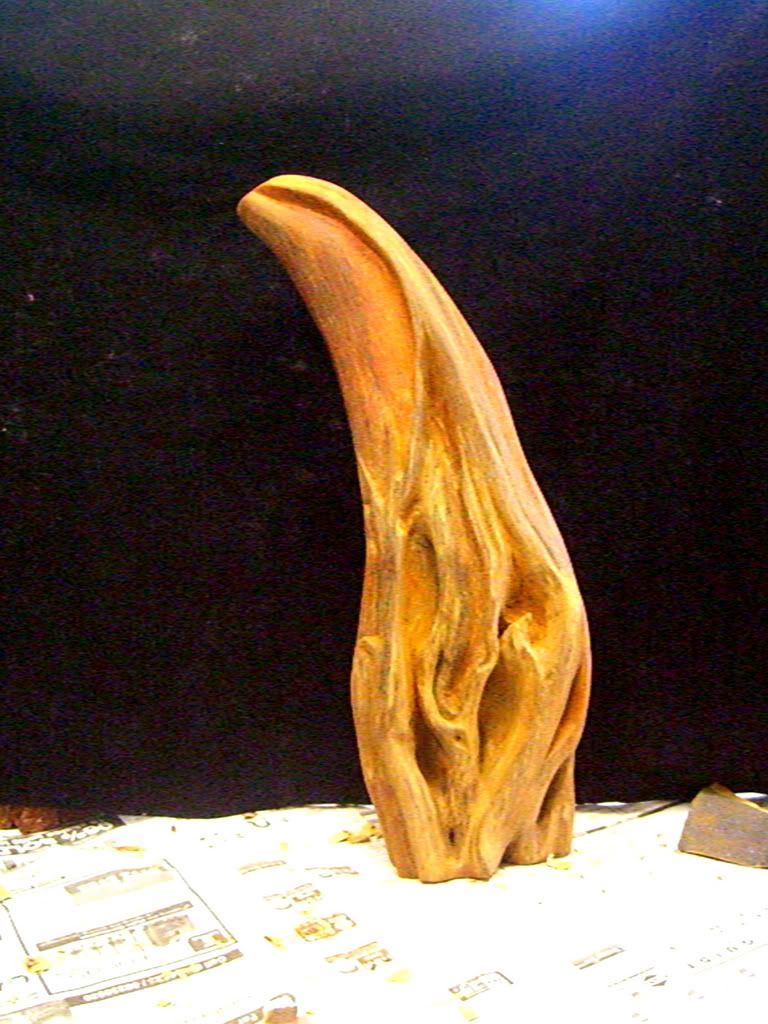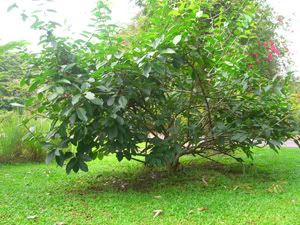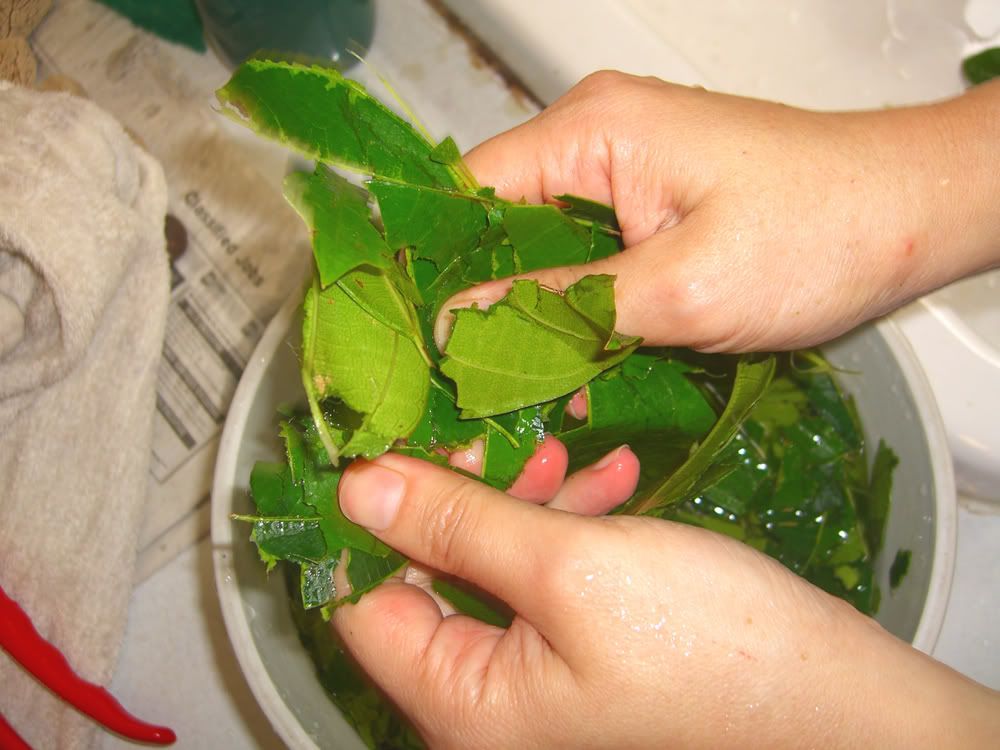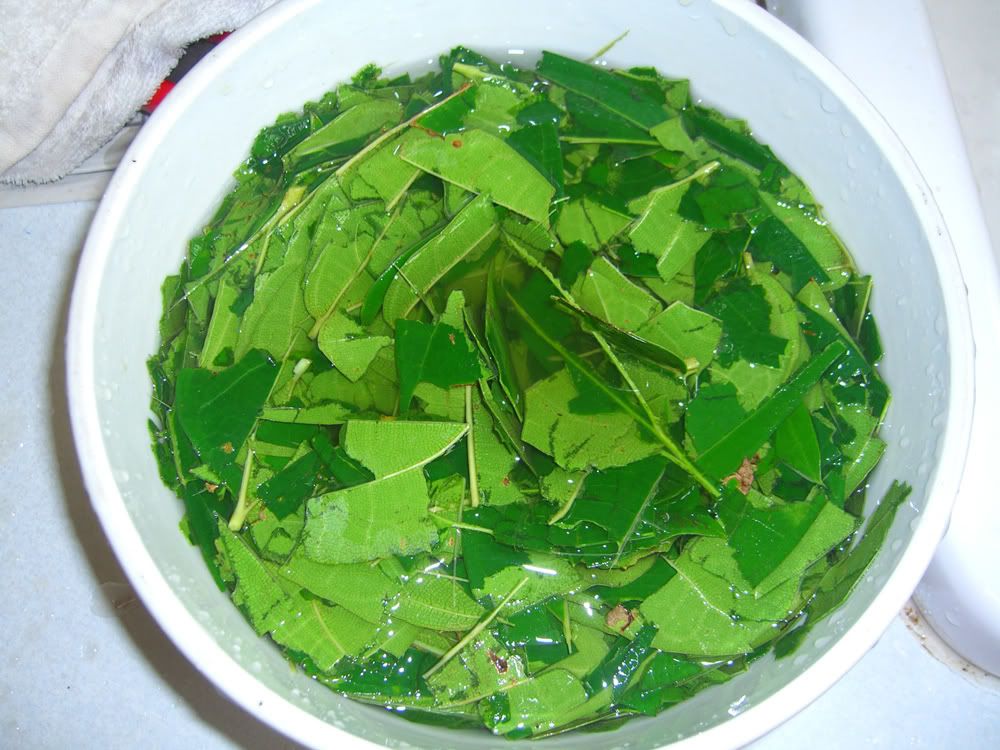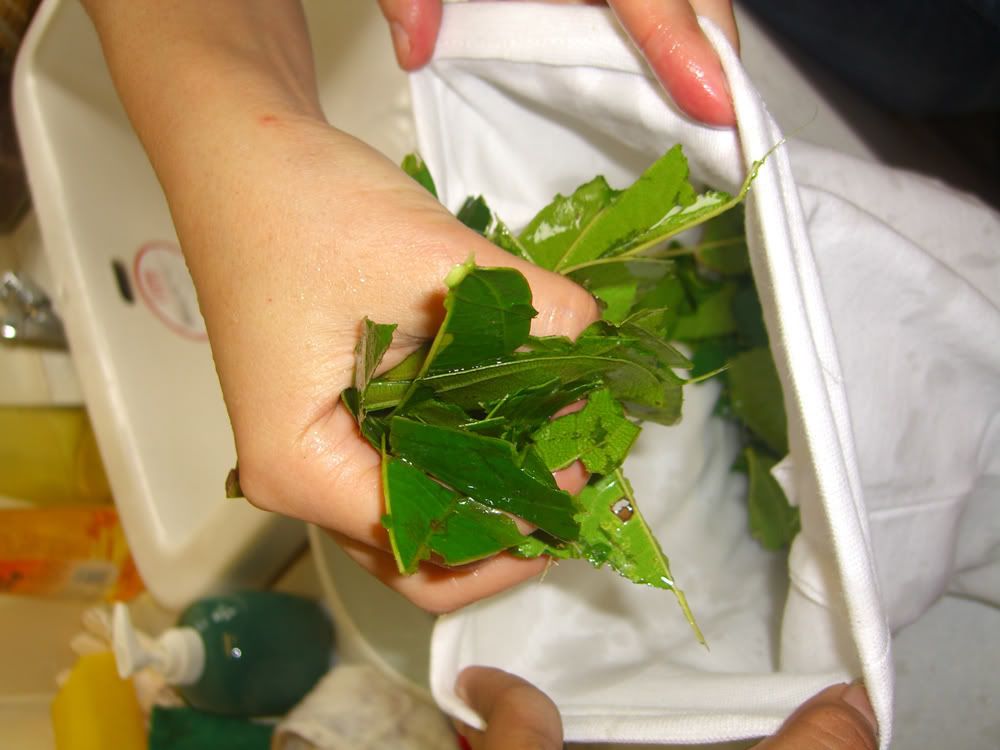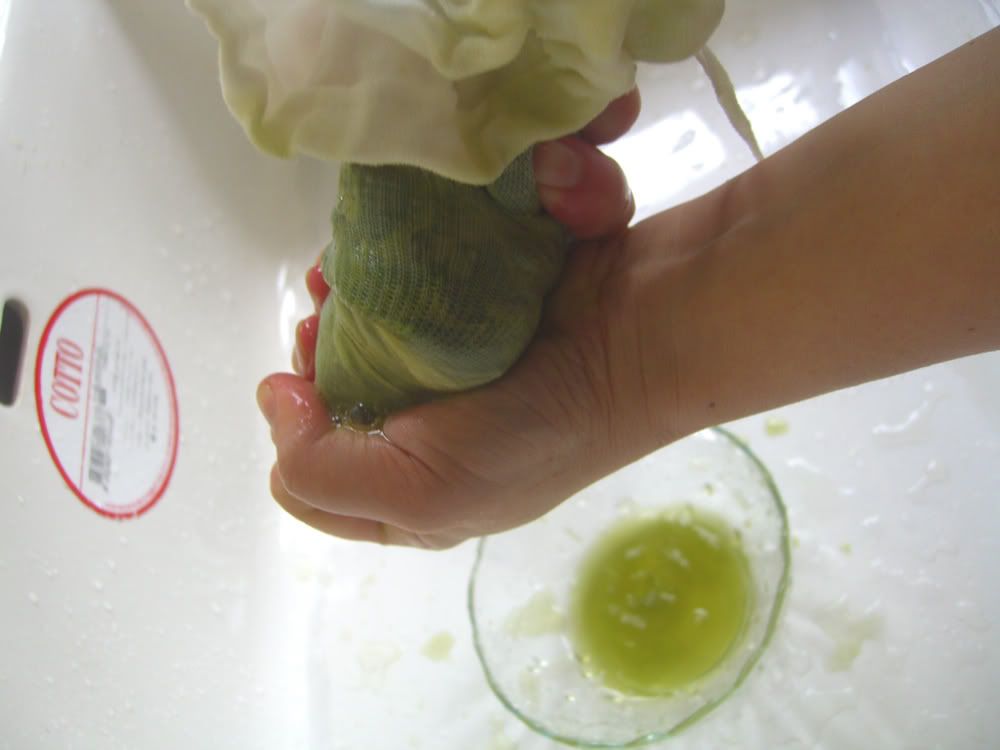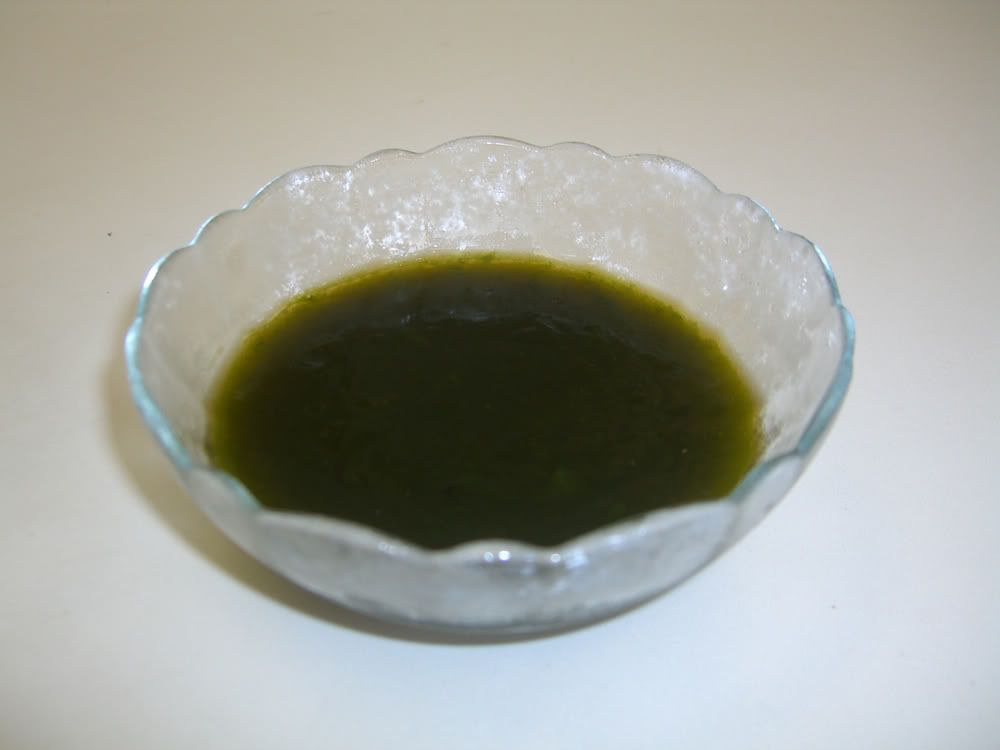Bloodwood
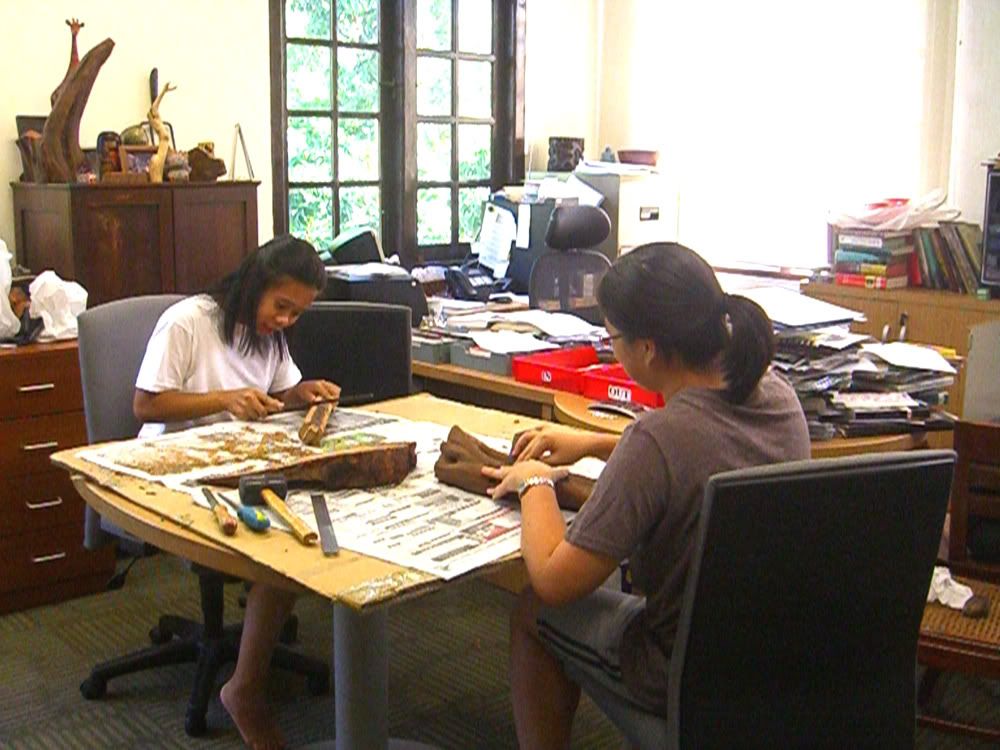
 Oli & Fiona at work
Oli & Fiona at workOli has found herself a new hobby this school holiday. She is into woodwork. She has been working on a piece of wood which came from the Bloodwood tree. Sometimes she gets help from friends like Claudi and Fiona who drop by on Saturdays when they feel like being creative.
The filing and sand papering soon resulted in a rather creative sculpture. The sculpture is given a name "Rooting for the Sky".
This particular sculpture actually came from an old dead root of the tree commonly known as Blood wood. The scientific name is Haematoxylum campechiana. We have an ancient tree in the Garden and probably due to its age, this tree is not in a healthy state.
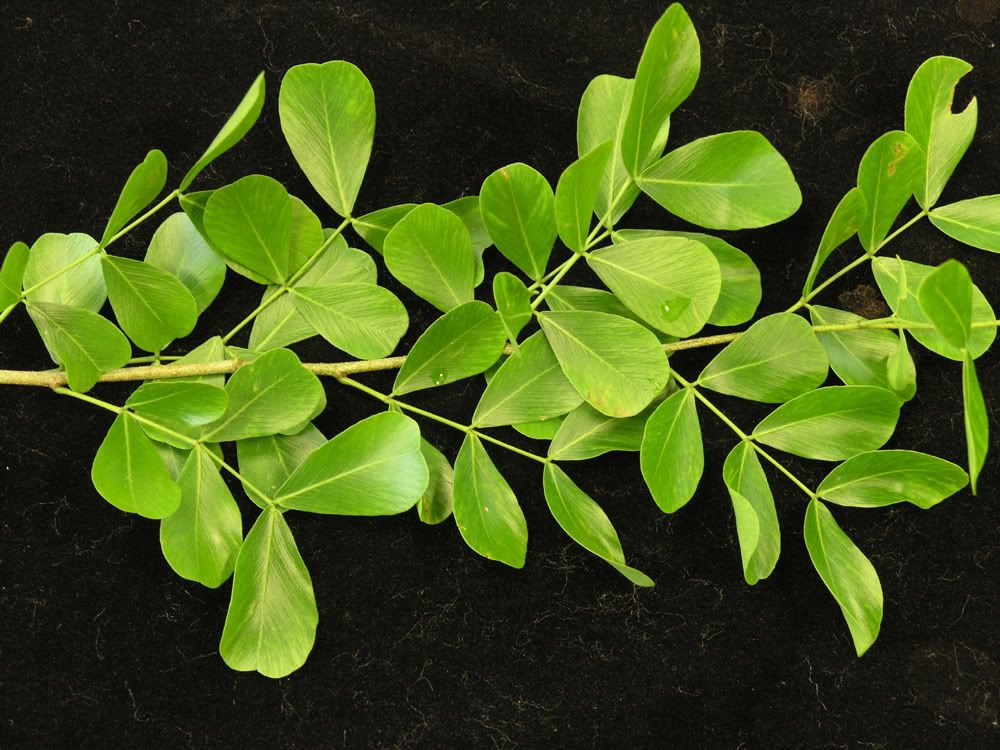 Leaves from Bloodwood tree
Leaves from Bloodwood treeThis tree is native to Brazil and some other parts of South America. A red/purple dye can be obtained from this tree. When Oli washed the wood dust off her hands under the running tap, the water turned purplish. Once we collected the purplish water in a container and left it to stand for a while, the purplish water turned red. This is probably how the tree got its name Bloodwood - the red reminding one of blood.
 Purple-stained paper
Purple-stained paper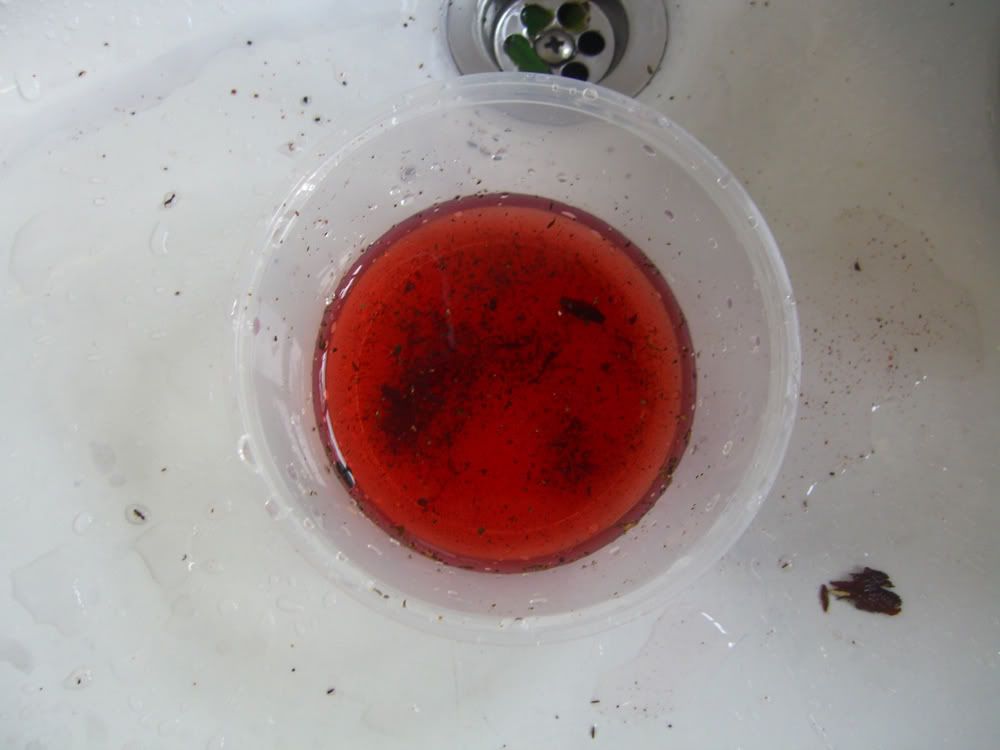 "Blood" - purplish water turned red
"Blood" - purplish water turned red
